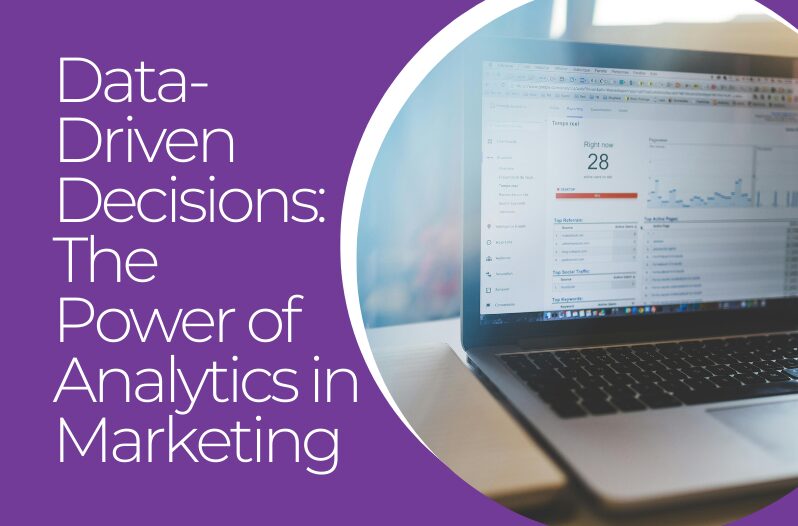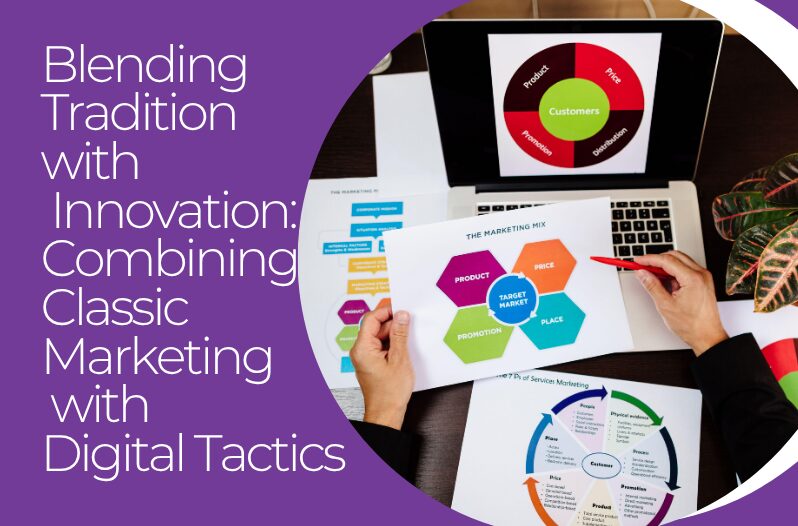In today’s fast-paced digital world, making marketing decisions based on gut feelings or intuition alone can feel like playing a high-stakes game of roulette. Enter data-driven decision-making, a game-changer for marketers aiming to hit the jackpot with every campaign. Let’s dive into why leveraging analytics in marketing isn’t just a trend—it’s a necessity.
The Data Deluge: Turning Noise into Insight
Every day, consumers leave behind a treasure trove of data. From social media interactions and website visits to email opens and purchase histories, the volume of data is staggering. But raw data in itself is just noise. The magic happens when this data is transformed into actionable insights.
Think of it like panning for gold. Among the heaps of information, analytics helps us find the nuggets of wisdom that can guide our marketing strategies. For instance, by analysing website traffic patterns, we can pinpoint which content resonates most with our audience, or which user journey leads to the highest conversion rates.
Example: A retail company might use Google Analytics to discover that blog posts about sustainable fashion generate 40% more engagement and 30% higher conversion rates than other topics. This insight can direct their content strategy, focusing more on sustainability-related posts to drive better results.
Personalisation: The Secret Sauce
One of the most powerful applications of analytics in marketing is personalisation. Gone are the days of one-size-fits-all campaigns. Today, consumers expect brands to understand their unique preferences and cater to them accordingly.
By leveraging data, we can segment our audience based on various parameters such as demographics, behaviour, and purchasing history. This allows us to tailor our messaging and offers to different segments, enhancing the customer experience and boosting engagement.
Example: An e-commerce platform might use customer purchase history and browsing behaviour to create personalised email campaigns. If data shows that a segment of customers frequently buys running gear, they can receive targeted emails promoting new arrivals in that category, leading to a 25% increase in click-through rates.
Predictive Analytics: Anticipating the Future
Wouldn’t it be great to have a crystal ball that reveals the future? Predictive analytics is the next best thing. By examining historical data and identifying patterns, predictive analytics can forecast future trends and behaviours.
For marketers, this means we can anticipate customer needs and preferences before they even arise. This proactive approach not only helps in crafting timely and relevant campaigns but also in optimising inventory, managing resources, and staying ahead of competitors.
Example: A subscription box service might use predictive analytics to determine which products are likely to be popular in the coming months. By analysing past subscription data and current market trends, they can curate boxes that match customer preferences, reducing churn rates by 15%.
Measuring Success: The Feedback Loop
One of the biggest advantages of data-driven marketing is the ability to measure the success of our efforts with pinpoint accuracy. Unlike traditional marketing methods, where gauging ROI was often a matter of guesswork, analytics provides concrete evidence of what works and what doesn’t.
Through key performance indicators (KPIs) and metrics, we can track everything from engagement rates and conversion rates to customer acquisition costs and return on investment. This continuous feedback loop enables us to fine-tune our strategies in real-time, ensuring that our marketing dollars are spent wisely.
Example: A SaaS company might track metrics such as cost per acquisition (CPA), lifetime value (LTV), and churn rate. By analysing these metrics, they can identify which marketing channels deliver the highest ROI, leading them to allocate more budget to top-performing channels and improve overall marketing efficiency.
The Human Element: Data + Creativity
While data-driven decisions are crucial, they don’t diminish the importance of human creativity. On the contrary, analytics and creativity go hand in hand. Data provides the insights and direction, while creativity brings those insights to life through compelling narratives and innovative campaigns.
Consider a fashion retailer who uses data to identify a growing trend in sustainable fashion. Armed with this insight, the marketing team can craft a campaign that not only highlights their eco-friendly products but also tells a captivating story that resonates with environmentally conscious consumers.
Embracing the Data-Driven Culture
Adopting a data-driven approach requires a cultural shift within the organisation. It means fostering a mindset that values evidence-based decision-making and encourages continuous learning and experimentation.
Investing in the right tools and technologies is essential, but so is empowering your team with the skills and knowledge to leverage these tools effectively. Training programs, workshops, and fostering a collaborative environment where data insights are shared and discussed can go a long way in building a data-centric culture.
Final Thoughts
In the realm of marketing, data is the new oil. It’s a valuable resource that, when refined through analytics, can drive powerful and impactful decisions. By embracing data-driven marketing, we not only enhance our ability to connect with consumers on a deeper level but also ensure that our strategies are effective, efficient, and ahead of the curve.
So, let’s harness the power of analytics, fuel our creativity with insights, and pave the way for smarter, more successful marketing. After all, in the age of information, those who make data their ally are the ones who will thrive.





